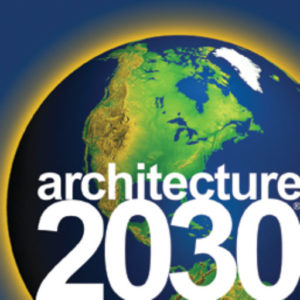BIG Announcement
Today, U.S. building sector CO2 emissions are 20.2% below 2005 levels. However, this is still much, much more to do….
Today, U.S. building sector CO2 emissions are 20.2% below 2005 levels. However, this is still much, much more to do….
Join Architecture 2030 at two upcoming events during A’18 – the AIA Conference on Architecture 2018 – in New York City, and at the Carbon Smart Buildings Day in San Francisco.
The INNOVATION 2030/COTE Top Ten for Students design competition winning projects have been announced! The top ten projects embraced this year’s challenge…
Introducing the first national and international ZERO Code for new commercial, institutional, and mid- to high-rise residential buildings.
Leading design firms across the U.S. and Canada are offering paid summer internships for student winners, and outstanding professionals have been selected to jury the AIA COTE Top Ten for Students Design Competition: INNOVATION 2030.
International Finance Corporation and Architecture 2030 Collaborate on Zero Net Carbon Buildings for the developing world.
The INNOVATION 2030 student design competition has launched. INNOVATION 2030 seeks to transform design studio education and professional practice through a design and ideas competition…
The International Living Future Institute (ILFI) has collaborated with Architecture 2030 to update their Reveal label – an easy-to-understand method of displaying the energy performance of a building.
Architecture 2030 introduces the Zero Tool, a free innovative online application that allows architects, designers, engineers, building owners and managers, and policymakers to calculate building energy consumption baselines and targets.
Throughout 2017, three intrepid members of the Architecture 2030 staff will train for and undertake 40-mile hiking and 200-mile biking fundraising events. Donating to these adventures is the first time individuals have had the chance to support the work of Architecture 2030 directly.
Architecture 2030’s mission is to rapidly transform the built environment from the major contributor of greenhouse gas emissions to a central solution to the climate crisis.
